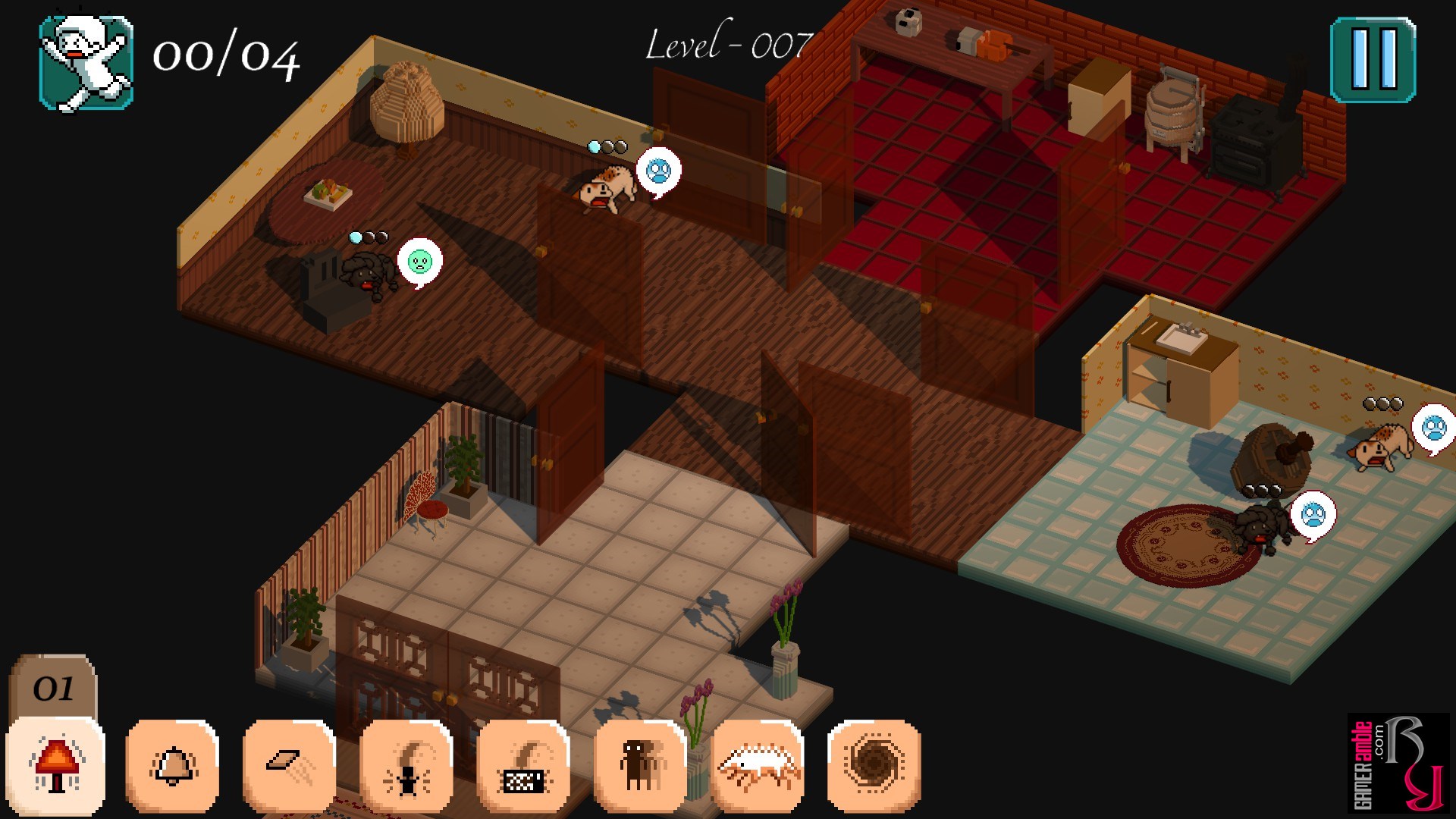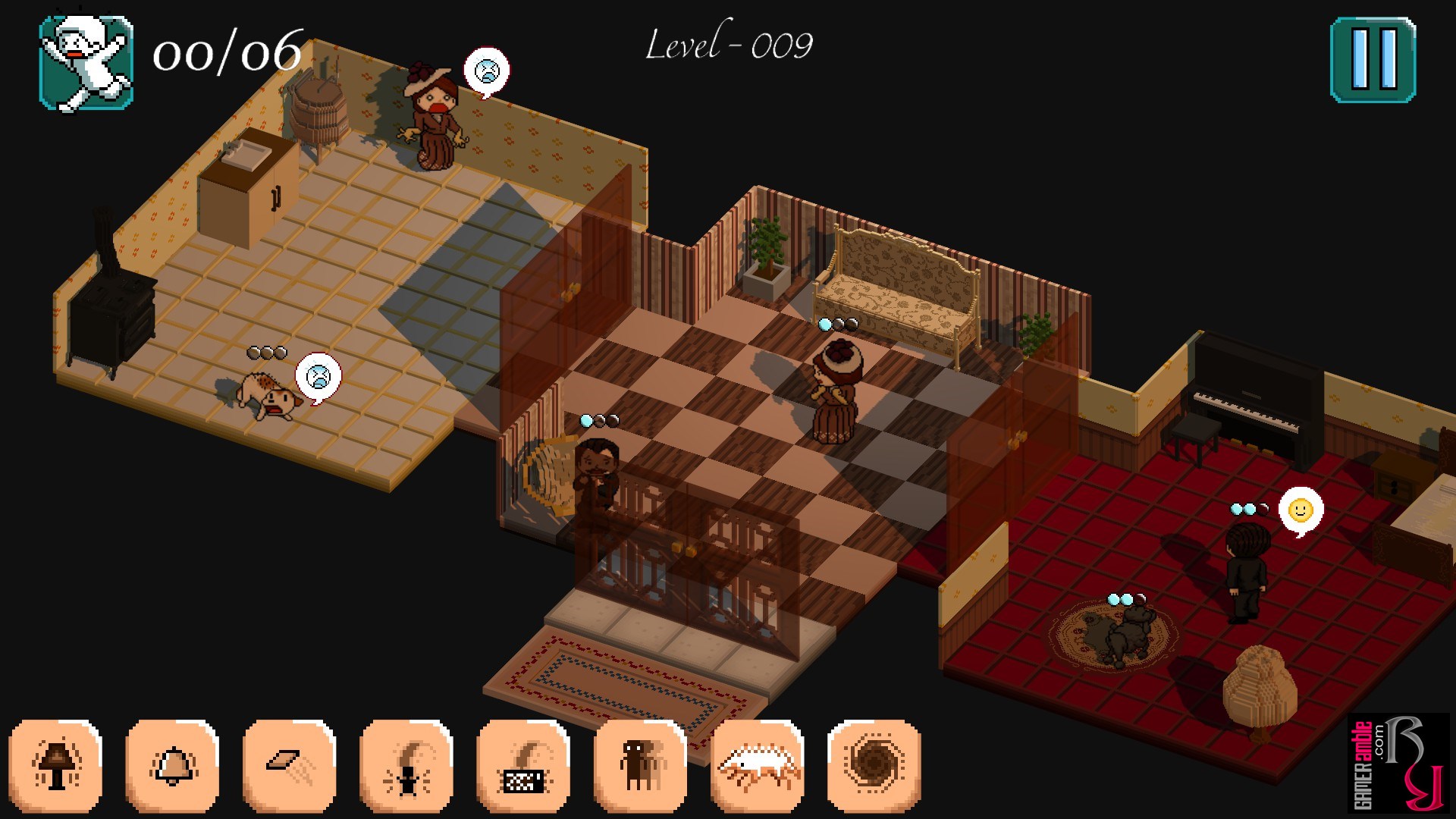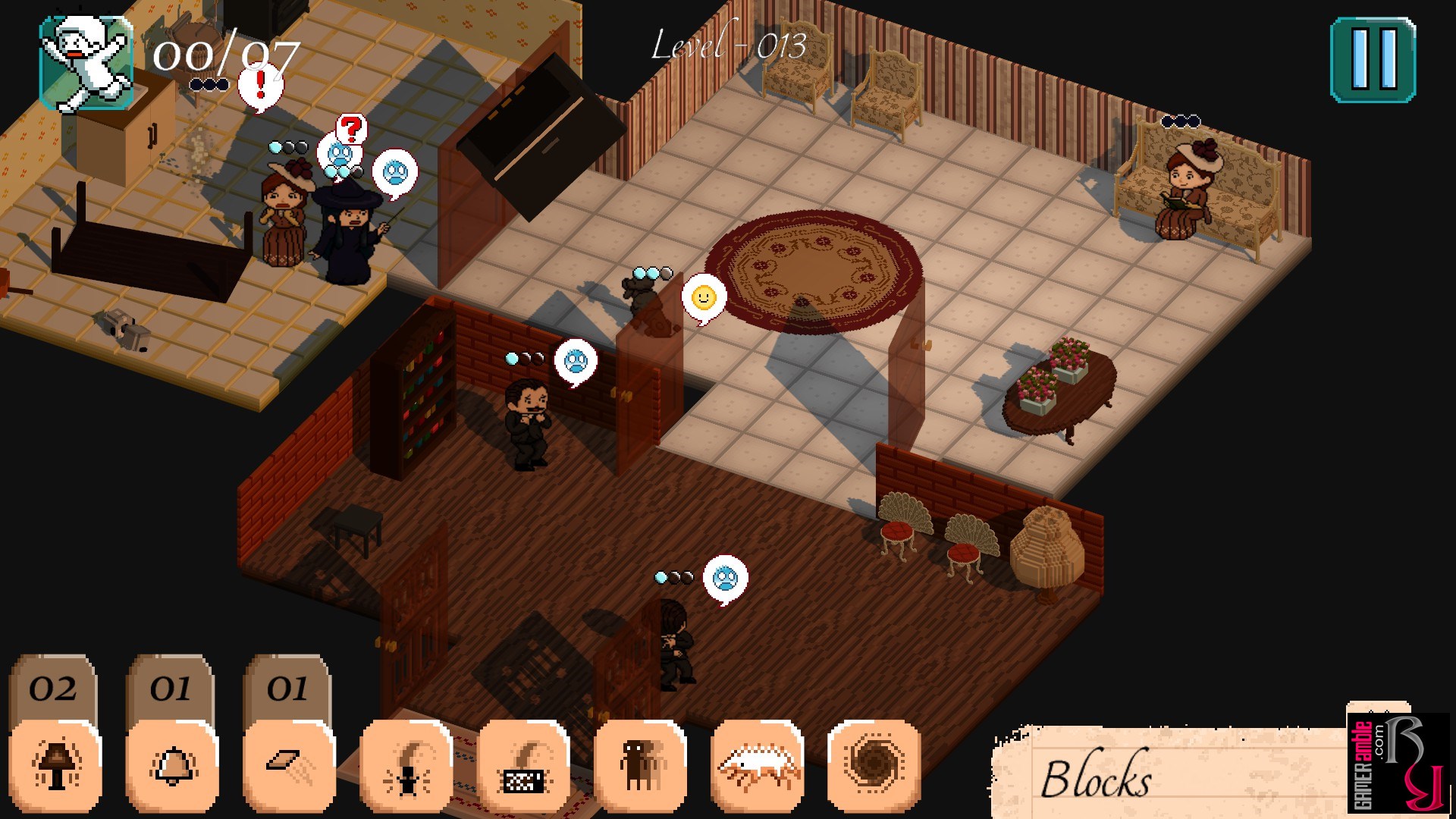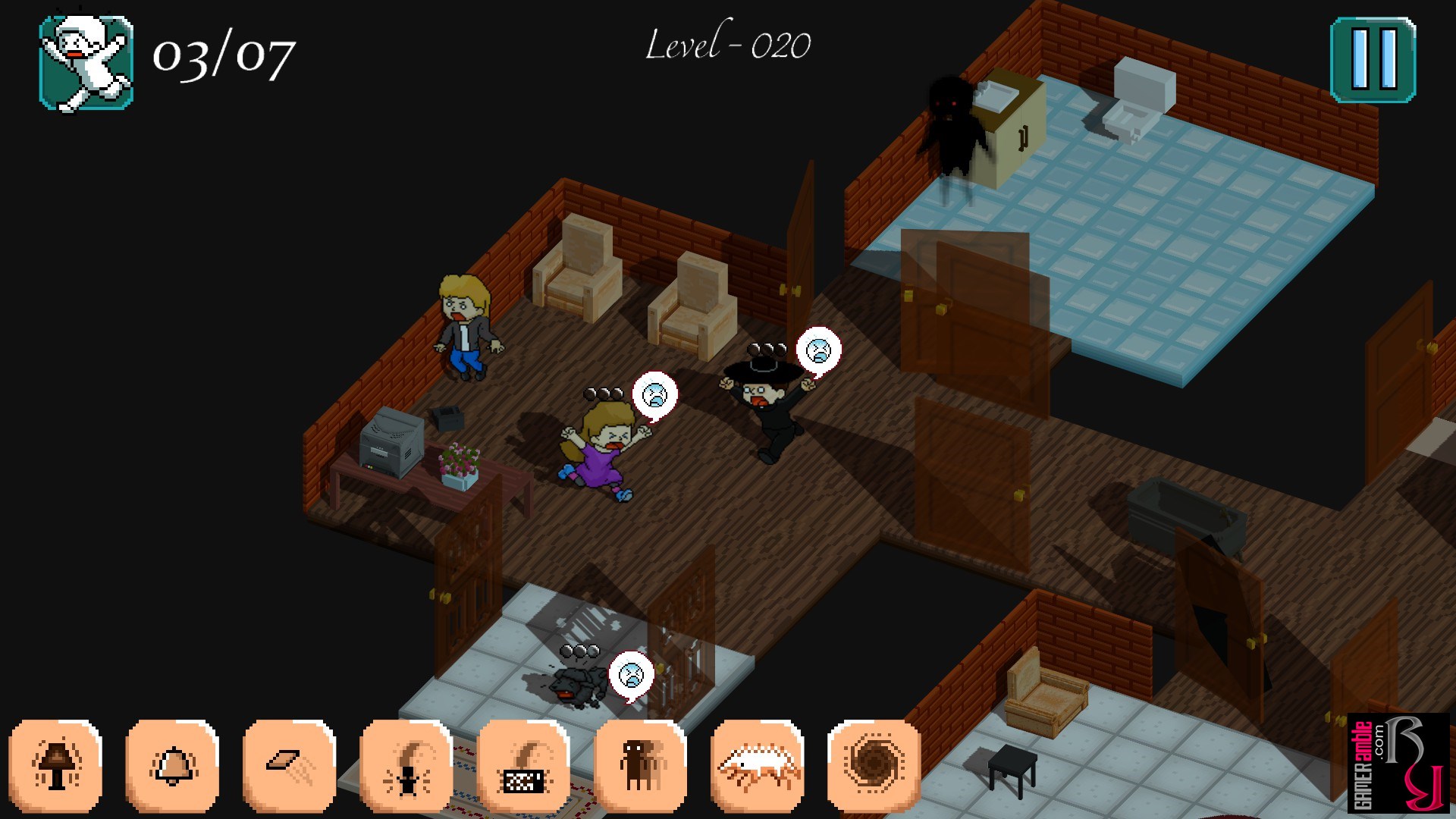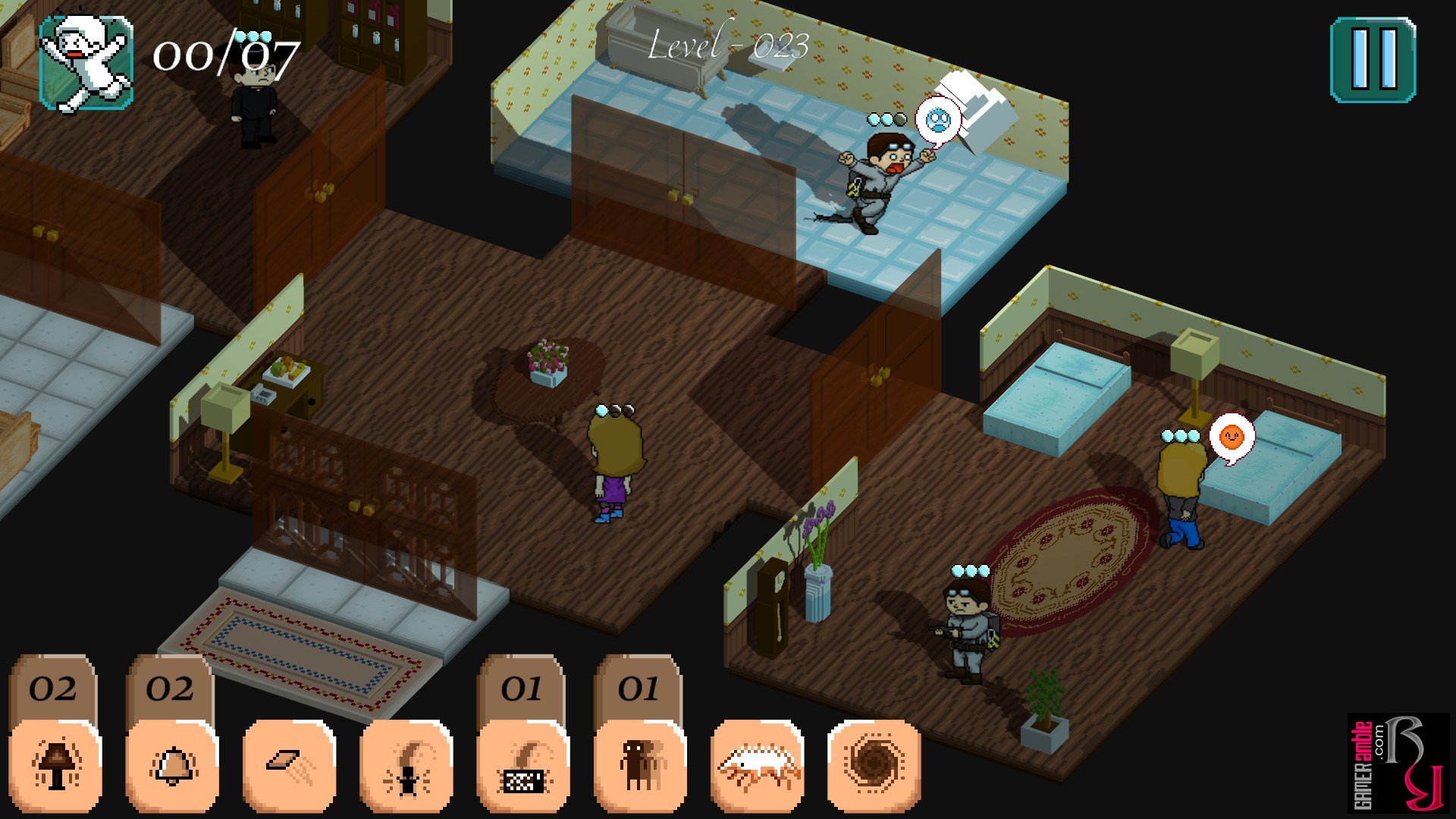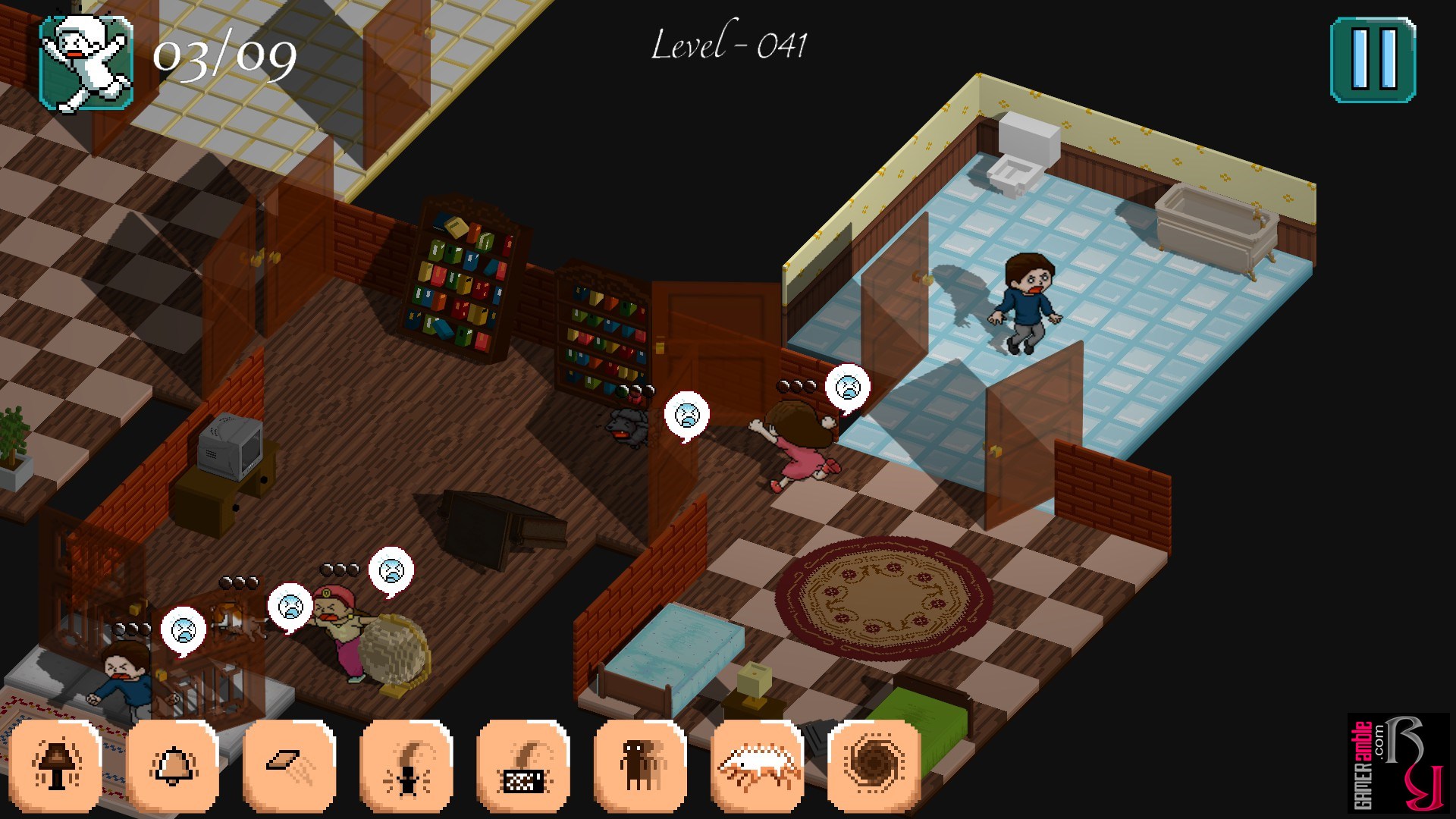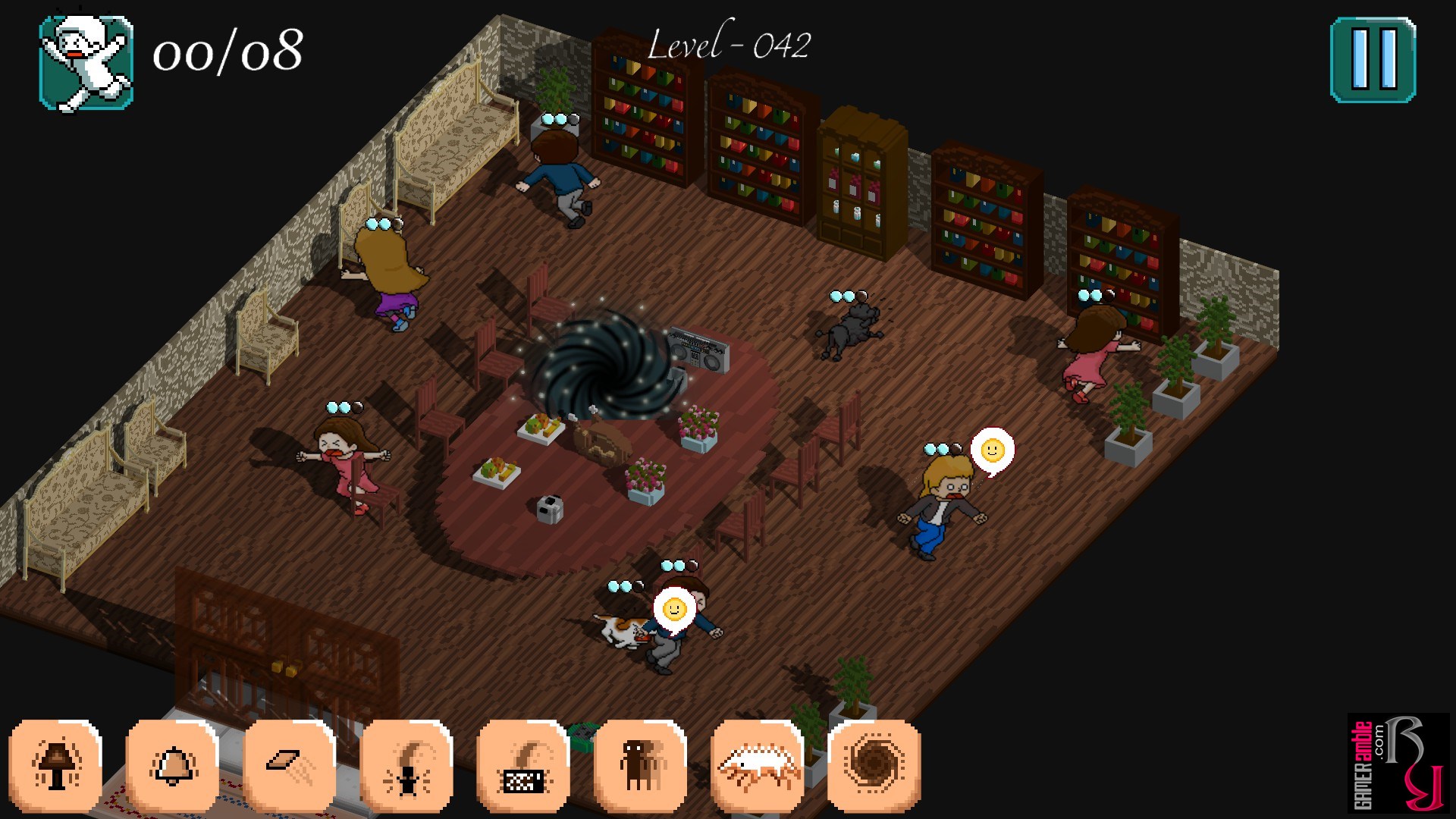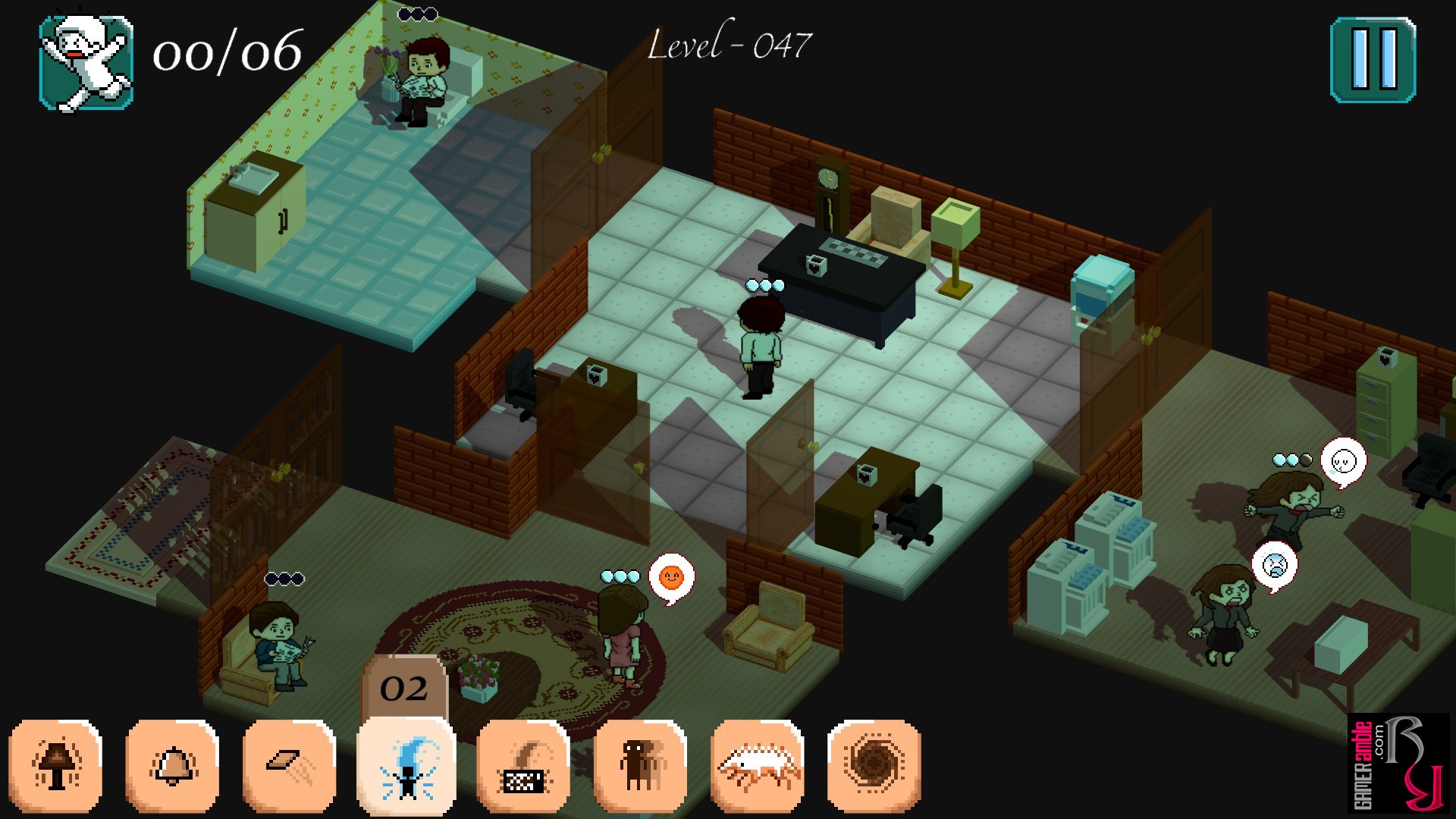Poltergeist: A Pixelated Horror
Developer: Glitchy Pixel | Publisher: Glitchy Pixel | Release Date: 2014 | Genre: Indie / Casual / Puzzle | Website: Official Website | Format: Digital Download
Poltergeist: A Pixelated Horror stars Henry B. Knight, a man so devastated by his wife’s tragic passing that he confines himself to his mansion and refuses to move on even after his own death. With the supernatural powers he gained from his attachment to the mansion, Henry focuses on scaring away any and all who dare set foot in his beloved abode.
We were expecting something like the 16-bit classic Haunting: Starring Polterguy or the more recent Ghost Master, but despite some similarities, Poltergeist is much more of a puzzle title. Instead of directly controlling Henry’s spirit, you are given a handful of powers to drive away everyone inside the mansion. Each level consists of a few rooms and a couple of people roaming around inside them. Barring the bosses, the people won’t travel between rooms unless driven to do so by one of your powers. Since you are given a limited amount of each power per level, you have to use them in the most efficient manner possible to win.
Things start easily enough with a small selection of rooms and folks that are quick to scare, but things become a bit trickier after the tutorial levels are done and new powers are introduced. Not only does the number of rooms per level increase, but folks become harder to scare. Each person has a scare bar shown above their head, which must be emptied before they flee the mansion in terror. To make matters worse, special characters are introduced, such as ghost hunters, priests, psychic mediums, and more, who are able to block certain powers. This means you must isolate them from other people, or they will block specific powers for the entire room. The game is designed in such a way that if you waste a single power, you usually won’t be able to complete the level. There are no optional “three-star” awards here for scaring everyone away; nothing less than perfection will win you the level.
Completing each of the sixty levels the game offers requires quite a bit of planning, although the difficulty felt a bit uneven. Sometimes, we breezed through a couple of levels with no problems before hitting one that had us scratching our heads in frustration. Although you have eight powers at your disposal, not all of them are available to you on each level, and you can usually only use the ones you have once or twice.
Powers include the ability to shake things, make a noise to lure people into a room, throw things, possess people, and the ability to possess objects. Later on, you will also be able to call specters, summon a ghostly dog to chase people into another room, and create vortexes that suck in everyone nearby. Sometimes, people are distracted, so you must scare them first to get their attention or get them away from the objects you need. Since each room typically has a limited amount of objects to interact with, which objects you use are often just as important as the power you use on them. After all, having the ability to throw or rattle something in a room won’t help much if there is nobody in the room or no objects to use these powers on. We would have liked the ability to rewind instead of having to restart the entire level after making a mistake, but each level is generally short enough that this isn’t a big issue.
Poltergeist: A Pixelated Horror runs on the Unity engine and, true to its name, features some nice pixelated visuals. The visuals blend 2D sprites for all the characters and 3D objects for the stuff you can move around. Since the 3D objects use the same pixel art style as the sprites, the difference isn’t that jarring, and it means that objects you throw around actually employ physics. The physics is not always very realistic, but it is still a nice touch and provides some humorous moments. The isometric overhead view cannot be rotated or zoomed, so all you can do is scroll around the playing area. This never felt limiting, though, and levels are generally small enough that you can view almost everything without having to scroll around too much. The interface could probably have benefited from a bit more polish, but overall, we really like the game’s visual design. The focus is definitely more comedic than spooky, though. The game has four themes, so you get to scare people and dogs during the classic, eighties, modern, and office eras. Each era has its own style, with modern eras introducing distractions such as televisions to make your life harder.
The audio features some appropriately spooky tunes and some rather nice sound effects. The screams of terror as your victims flee the mansion are particularly well done and never get old. Although the music isn’t particularly memorable, it does fit the game’s theme quite well and never becomes annoying, which is a big plus. The game is also entirely mouse-driven and easy to control.
Overall, Poltergeist: A Pixelated Horror offers enough addictive levels to keep players busy for quite a while. The length of the game felt about right for the price, and we were quite impressed by what the small team of Columbian developers were able to accomplish. This game won the Square Enix Latin American Game Contest in 2012, and the team made some improvements for this Steam release. If you are looking for a nice relaxing game with no time limit and simple-to-understand gameplay, then you could do far worse than Poltergeist.
System Requirements
- OS: Windows XP+
- Processor: SSE2 instruction set support
- Memory: 1 GB RAM
- Graphics: DX9 (shader model 2.0) capabilities
- DirectX: Version 9.0
- Hard Drive: 500 MB available space
- OS: Windows 7+
- Processor: SSE2 instruction set support
- Graphics: DX9 (shader model 2.0) capabilities
- DirectX: Version 9.0
- Hard Drive: 500 MB available space



